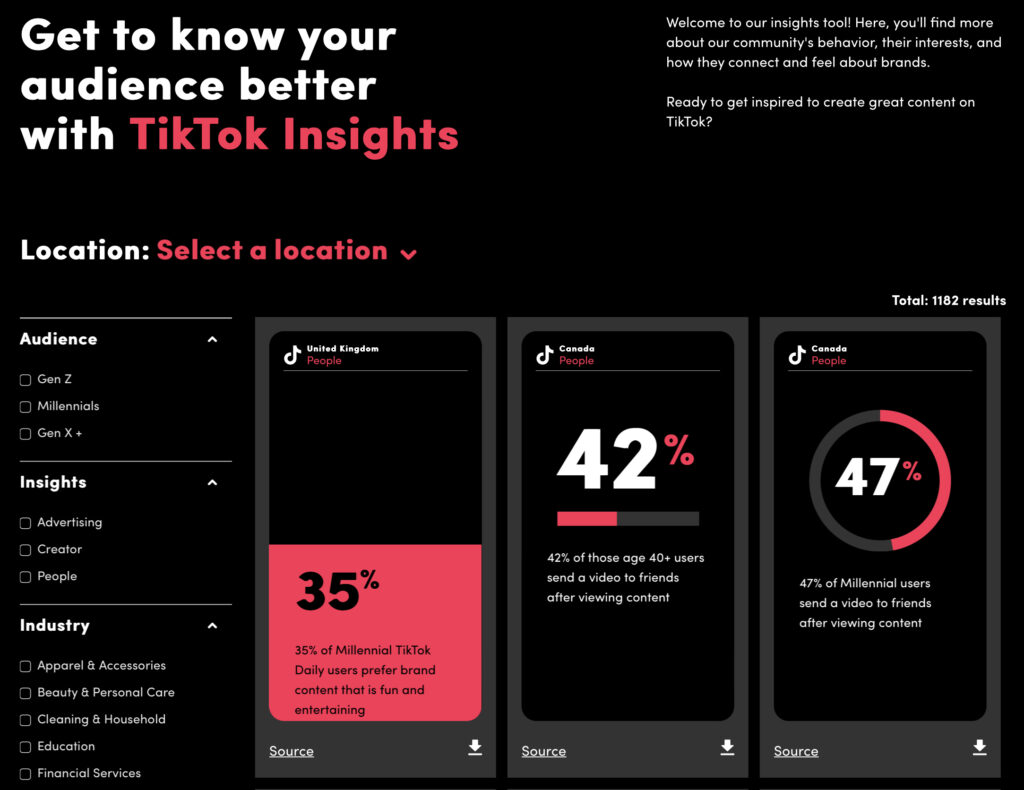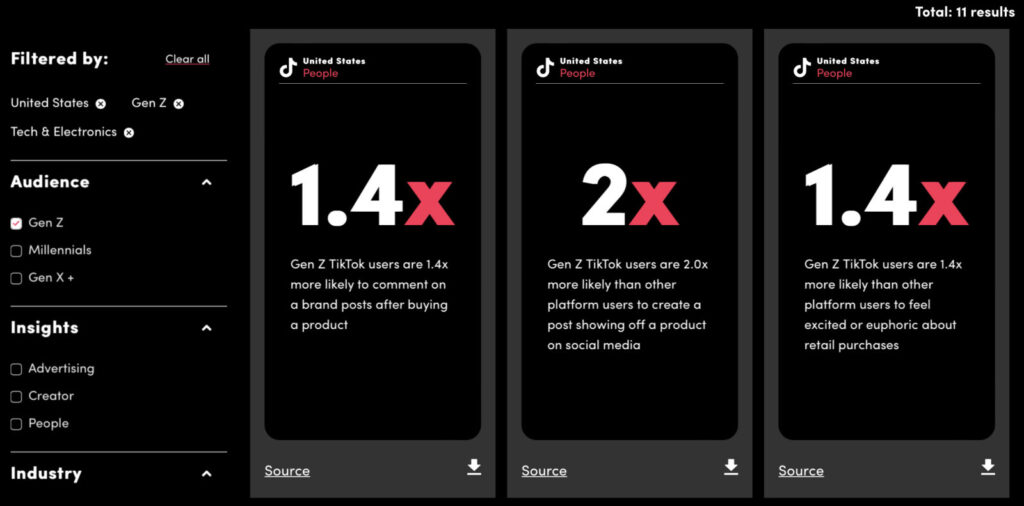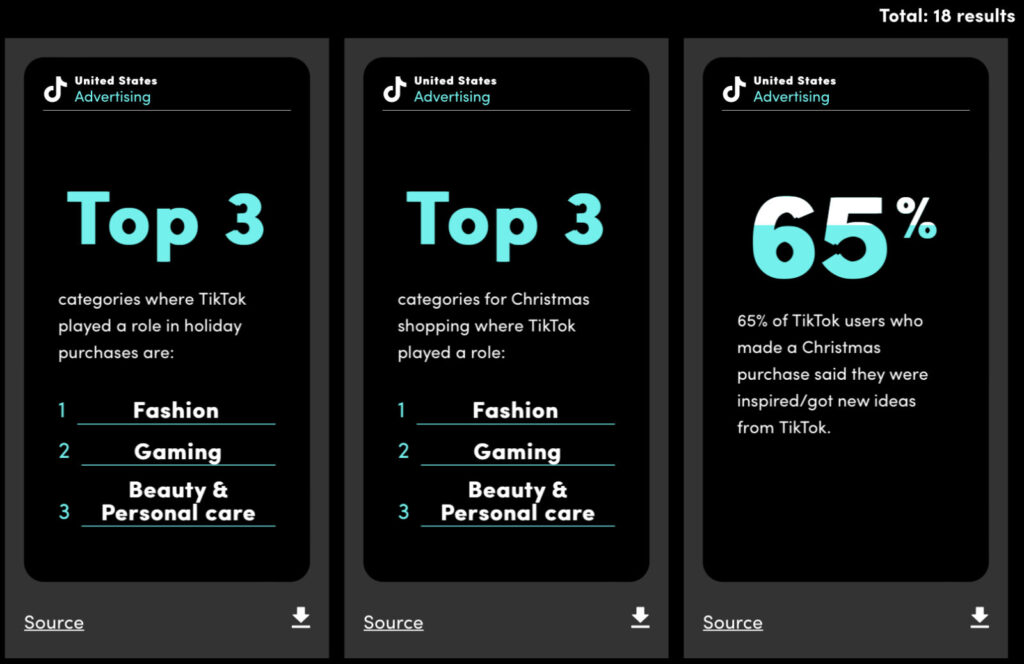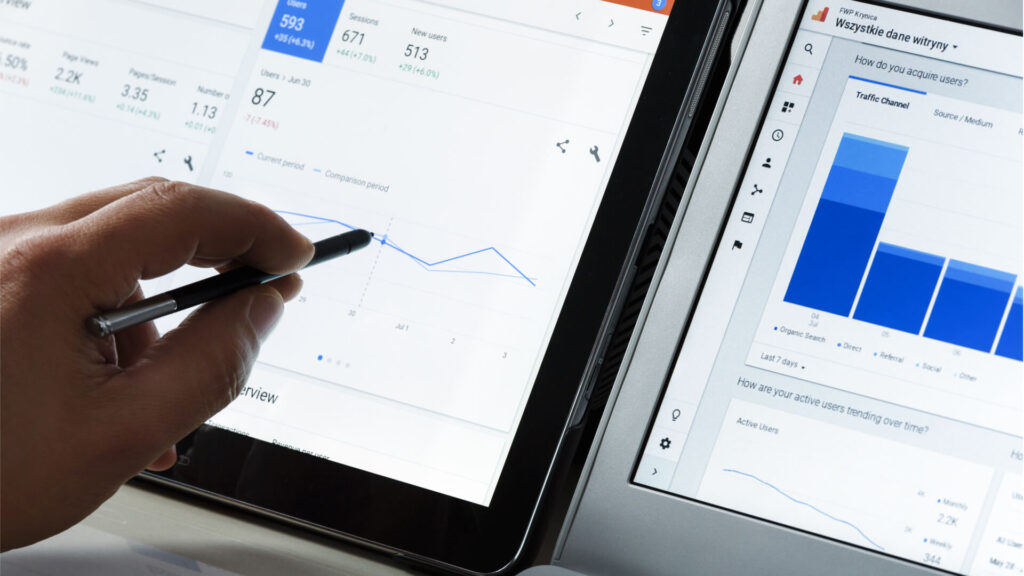
New TikTok Tool Surfaces Useful Insights For Marketers
TikTok has launched a new tool that surfaces insights marketers can use to target different demographics around the world.
With TikTok Insights you can learn more about your audience’s behavior, their interests, and their general sentiment toward brands.
Featuring dozens of filters, TikTok Insights allows you to cut through data that’s irrelevant to your business and get only the insights that matter.
TikTok Insights is free to to use, making it an ideal addition to your marketing toolbox.
Here’s more about how to use this new tool and how it can assist your TikTok marketing efforts.
TikTok Insights Tool
TikTok Insights surfaces bite sized pieces of data that can help businesses refine their marketing campaigns.
When you first land on TikTok Insights you’re presented with a selection of tiles that each contain a piece of data.

You can sort through the tiles by selecting different filters on the left side of the screen. You can get as granular as you want.
If you want general data about Gen Z, you can get that. Or, if you want data about how American Gen Z users respond to tech & electronic marketing, you can get that too.

In addition to filtering by demographics and industries, you can also get data related to specific events and holidays.
Should you feel like getting a head start on planning Christmas marketing, for example, you can simply select the corresponding filter.

Should you feel like getting a head start on planning Christmas marketing, for example, you can simply select the corresponding filter.
If you’re using the data in an article or report, you can click Source to copy a citation and paste it into your document.
There’s limited data available at the moment. If you add too many filters you’ll likely run into instances where there’s no results available.
However, there’s much potential for TikTok Insights to be a valuable resource as it gets built out over time.
Source: New TikTok Tool Surfaces Useful Insights For Marketers
Google Search Console page experience report now tracks more desktop search features

Google has updated some of the reporting within Google Search Console to track additional desktop features for the page experience report, the company noted. That means you may see an increase in desktop impressions in the page experience report and the performance reports when filtered by “good page experience.”
The announcement. The original announcement was posted yesterday and it was super confusing, but this morning, Google has clarified the announcement to read:
“Search Console now logs impressions in the Page Experience report for additional desktop features, such as Top Stories. As a result, you may see an increase in your desktop impressions in the Page Experience report, as well as in the Search and News performance reports when filtering by the “Good Page Experience” search appearance.”
What changed. Google did not track some desktop features in the page experience report. Now that Google is tracking and logging those impressions for additional desktop features for the page experience report, you may see an increase in impressions starting on and after May 13th. This also can impact the Google Search Console Search and News performance reports when you specifically filter those reports using the “Good Page Experience” search appearance.
What to look out for. If you see a spike or increase in impressions starting on May 13th, you can drill in and filter by “Good Page Experience” search appearance in the Search and News performance reports to see if this is likely from the new logging of additional desktop features.
Google has always logged those impressions in the other reports, but not specifically for when it comes to desktop page experience.
Source: Google Search Console page experience report now tracks more desktop search features
Similarweb Acquires SEO & Rank Tracking Company Rank Ranger
On May 16, Similarweb announced it has acquired Rank Ranger, an SEO and rank tracking company.
This allows the Tel Aviv, Israel-based digital intelligence provider to offer term rank tracking alongside its keyword research and analysis tools.
With cross-search engine capabilities, the combined power of these companies seeks to provide search professionals with better insights into traffic-driving keywords.
Purchase Enhances Similarweb’s SEO Capabilities
This acquisition, the terms of which were not disclosed, means Similarweb users will now be able to monitor, track and report on keyword rankings over time.
The combined functionality of this merger should allow search professionals to quickly identify ways to grow traffic and generate better returns on their search investments.
Rank Ranger Provides Optimization Tools For Search Professionals
Founded in 2009, Durham, North Carolina-based Rank Ranger has software tools designed to help businesses capitalize on both free and paid traffic opportunities.
This includes functionality for monitoring progress and measuring, optimizing and reporting on specific strategies.
The incorporation of these capabilities into daily workflows gives search professionals the ability to quickly react to changes in search engine rankings, whether caused by competitor content or trends in the market.
Source: Similarweb Acquires SEO & Rank Tracking Company Rank Ranger
Webinar: Dominate your competition with Google auction insights and search intelligence
Auction insights is a powerful tool we’ve all come to use for understanding campaign performance against competitors. Search intelligence adds another layer of granularity to ensure you’re one step ahead of your competition.
Join Sean O’Connor, Senior CSM and Sales Engineer at Adthena, to explore three easy search intelligence tactics that will help you dominate your competitors along with use-cases from L’Oreal and Avanti West Coast trains.
Register today for “Dominate Your Competition with Google Auction Insights and Search Intelligence” presented by Adthena.
Source: Webinar: Dominate your competition with Google auction insights and search intelligence
Vimeo adds structured data to all public videos to improve Google Search visibility

Vimeo, a popular video hosting platform (obviously not as popular as YouTube), has added structured data to all of its publicly available videos on its platform. Vimeo said the SEO changes they made to the videos will give “your videos the best opportunity to appear for relevant searches.”
Google worked with Vimeo? Vimeo wrote that they worked with Google as an “early adopter of Google Search’s best practices for video players” to provide Google with “additional context about your videos.” This will help Vimeo surface those videos in Google search and take advantage of the video-rich results, like displaying key moments for videos in Google Search by adding chapters and timestamps to video structured data.
Google’s video best practices. The video best practices are not exclusive to Vimeo or “early adopters.” These best practices are published by Google over here for anyone who hosts videos to read and adopt on their websites or platforms.
The video best practices cover:
- Help Google find your videos
- Ensure your videos can be indexed
- Allow Google to fetch your video content files
- Enable specific video features
- Remove, restrict, or update your videos as needed
Steps to take in Vimeo. Vimeo said there is really nothing specific you need to do to take advantage of these SEO changes, outside of making your videos public. Vimeo wrote, “all you need to do is make sure your videos are listed as public. Our technology will handlee the rest.” That means the video platform will ensure the videos are (1) indexable, (2) that your metadata is optimized, and (3) that your chapters are visible to Google Search for key moments.
Vimeo’s SEO advice. Despite Vimeo handling this by default for you, Vimeo posted some tips for you when uploading your videos, naming them and adding descriptions and other data. That advice includes:
- Add chapters to your videos: Google doesn’t only review the title, but also the titles used for each chapter – which means adding chapters can help users discover the part of your video that is most relevant to their search.
- Choose your titles wisely: The title is displayed alongside your video thumbnail in search results. While it’s great to have a unique and catchy name for your video, it’s also important to keep your title descriptive using keywords most relevant to your audience’s searches.
- Research the best keywords: If you want new people to discover your video, it makes sense to describe it in the terms that people are searching for.
Note, that chapters are only available on the Pro plan or above or Vimeo.
Source: Vimeo adds structured data to all public videos to improve Google Search visibility
More News:
Link building: the least favorite part of SEO
Here’s What We Learned From TikTok, Meta, Snap & Twitter At IAB NewFronts